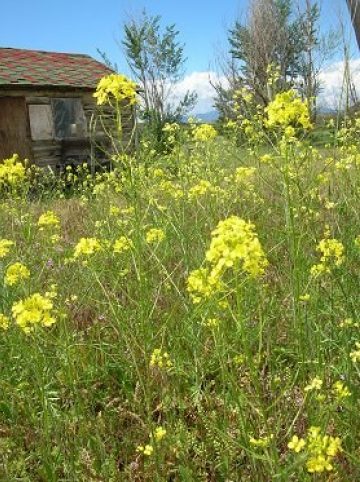
Puncturevine
Scientific Name: Tribulus terrestris
Puncturevine is an annual weed that sprouts and grows from seed every year and then dies. Starting from the central sprouting point at the root, stems spread out radially, staying low to the ground when the plant has direct sunlight. Dense mats can form with leaf-covered stems trailing out like runners, except the plant does not send roots from these stems. Mats start small and can grow quite large to several feet in diameter. In the shade, the same thing happens but the stems can grow slightly upright instead of flat to the ground.
Learn More

